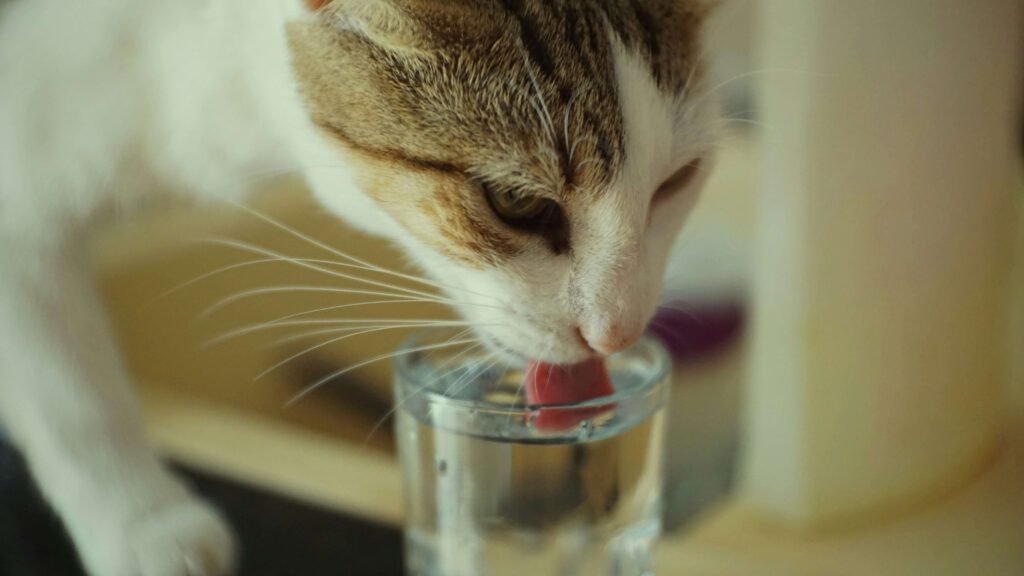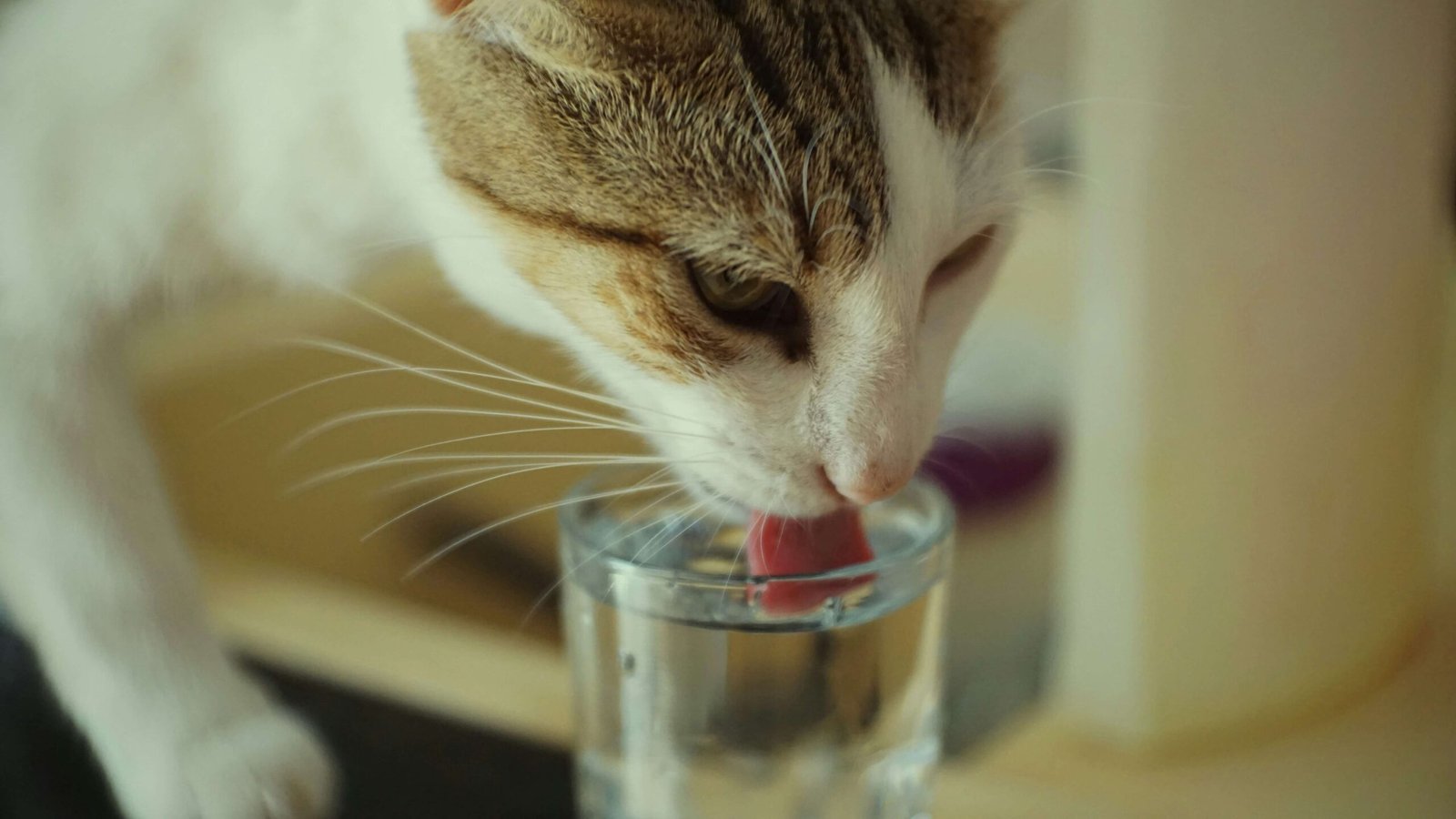Why Is My Cat Drinking So Much Water? Understanding the Reasons Behind This Behavior
Cats are known for their quirky habits and unique personalities, but when it comes to water consumption, some behaviors might raise an eyebrow. If you’ve noticed your feline friend drinking more water than usual, it’s natural to wonder whether this is normal or if there’s an underlying issue. While cats typically don’t drink as much water as dogs, excessive thirst—medically referred to as polydipsia—can sometimes signal health concerns.
In this blog post, we’ll explore the reasons behind increased water consumption in cats, provide tips for observation, and help you determine when it’s time to consult a veterinarian. Let’s dive into this fascinating topic and ensure your furry companion stays healthy and hydrated!
Common Reasons Why Your Cat Might Be Drinking More Water
If your cat has suddenly developed a penchant for sipping water, there could be several explanations. Here’s a breakdown of the most common causes:
Hot Weather or Increased Activity Levels
Cats may drink more water during warmer months or after engaging in play. Just like humans, they need extra hydration when they’re active or exposed to heat.Dry Food Diet
Cats that primarily eat dry kibble often require more water to compensate for the lack of moisture in their food. Wet food, on the other hand, contains higher water content.Age-Related Changes
Older cats may naturally start drinking more water due to changes in metabolism or declining kidney function.Medications
Certain medications can cause increased thirst as a side effect. If your cat is on any prescription drugs, check with your vet about potential impacts on hydration needs.Health Conditions
Excessive water consumption can sometimes indicate underlying medical issues such as diabetes, hyperthyroidism, or kidney disease.
Understanding these factors can help you identify whether your cat’s behavior is harmless or warrants further investigation. Always monitor their overall health alongside their drinking habits.
Signs That Increased Water Consumption Could Be a Problem
While occasional spikes in water intake aren’t necessarily alarming, certain signs accompanying this behavior should prompt closer attention. Here’s what to look out for:
Frequent Urination
If your cat is using the litter box more often than usual, it could indicate an imbalance in their system. Polyuria (excessive urination) often goes hand-in-hand with polydipsia.Lethargy or Weakness
A noticeable drop in energy levels or reluctance to engage in regular activities might suggest dehydration or illness.Changes in Appetite
Sudden weight loss, refusal to eat, or voracious hunger could point to metabolic disorders like diabetes or hyperthyroidism.Poor Coat Condition
Dull fur, flaky skin, or excessive shedding may reflect dehydration or nutritional deficiencies.Vomiting or Diarrhea
Gastrointestinal upset combined with increased water intake can signal serious health problems requiring immediate care.
If you observe any of these symptoms alongside increased water consumption, it’s crucial to seek veterinary advice promptly. Early detection can make all the difference in managing potential health issues effectively.
Check this guide 👉Why Is My Cat Not Drinking Water? Best 7 Health Tips!
Check this guide 👉Why Is My Cat Not Eating? Best 7 Expert Tips!

Possible Causes of Increased Water Intake | Recommended Actions |
|---|---|
Hot weather | Ensure fresh water is always available. |
Dry food diet | Incorporate wet food into their meals. |
Age-related changes | Schedule regular vet check-ups. |
Medication side effects | Consult your vet about dosage adjustments. |
Underlying health conditions | Perform diagnostic tests at the clinic. |
How to Encourage Healthy Hydration in Your Cat
Promoting adequate hydration is essential for your cat’s well-being, especially if they’re prone to drinking less water than needed. Here are some strategies to encourage healthy water intake:
Provide Fresh Water Daily
Stale or dirty water can deter even the thirstiest cats. Replace their water bowl daily to keep it appealing.Use Multiple Water Sources
Place water bowls in different areas of your home to make hydration convenient and accessible.Invest in a Cat Fountain
Many cats prefer running water over still water. A cat fountain mimics natural streams and can entice picky drinkers.Flavor Their Water
Adding a splash of low-sodium chicken broth or tuna juice to their water can make it more enticing without compromising their health.Monitor Their Diet
Opt for high-quality wet food or mix water into their dry kibble to boost their fluid intake subtly.
By implementing these tips, you can create an environment that supports optimal hydration for your feline friend while catering to their preferences.
When to Seek Veterinary Advice for Your Cat’s Water Intake
Knowing when to consult a professional is key to safeguarding your cat’s health. Consider reaching out to your vet under the following circumstances:
Sudden Behavioral Changes
If your cat’s water consumption increases dramatically within a short period, it could indicate an acute issue.Persistent Symptoms
Continuous excessive thirst lasting more than a few days shouldn’t be ignored, as it may signify chronic conditions.Accompanying Health Issues
Symptoms like vomiting, diarrhea, or labored breathing alongside increased water intake require urgent attention.Age Considerations
Senior cats are more susceptible to age-related ailments, so vigilance is critical if they show unusual drinking patterns.Unexplained Weight Loss
Significant weight changes coupled with excessive thirst could point to hormonal imbalances or organ dysfunction.
Remember, your veterinarian is your best resource for diagnosing and addressing concerns related to your cat’s water consumption. Don’t hesitate to reach out for guidance.
Environmental Factors That Influence Your Cat’s Water Intake
Your cat’s surroundings can significantly impact their water consumption habits. From temperature changes to household dynamics, environmental factors play a crucial role in determining how much water they drink. Here are some key influences:
Seasonal Changes
Cats may drink more water during warmer months to regulate their body temperature and stay hydrated.Indoor vs. Outdoor Living
Indoor cats might rely more on their water bowls, while outdoor cats could hydrate from natural sources like puddles or dew.Household Stressors
Loud noises, new family members, or rearranged furniture can affect your cat’s stress levels, potentially altering their drinking patterns.Availability of Fresh Water
Cats are finicky drinkers; if water isn’t fresh or easily accessible, they may avoid it altogether.Proximity to Food Bowls
Some cats dislike drinking near their food bowls due to instinctual preferences, so placing water elsewhere can encourage hydration.
By paying attention to these environmental factors, you can create a space that promotes healthy hydration habits for your cat. Small adjustments in their surroundings can make a big difference.
Dietary Adjustments to Support Optimal Hydration
What your cat eats directly affects their water intake, especially since many cats don’t naturally feel compelled to drink enough water. Making dietary adjustments can help ensure they stay properly hydrated. Consider the following tips:
Switching to Wet Food
Wet food contains up to 80% moisture, making it an excellent way to increase your cat’s fluid intake effortlessly.Adding Water to Dry Kibble
Mixing a small amount of water into dry food can help supplement their hydration needs without drastically changing their diet.Homemade Broth Treats
Preparing low-sodium chicken or bone broth can serve as both a treat and a hydration booster.Hydration-Friendly Snacks
Offer snacks like watermelon (seedless) or cucumber slices, which are safe for cats and contain high water content.Avoiding Salty Foods
High-sodium treats or table scraps can dehydrate your cat, so steer clear of salty human foods.
Incorporating these dietary changes can not only enhance your cat’s hydration but also improve their overall health. A well-balanced diet is essential for keeping them thriving.
Fun Ways to Encourage Your Cat to Drink More Water
Sometimes, simply filling a bowl isn’t enough to entice your cat to drink. Adding a little creativity to their hydration routine can make drinking water a fun and engaging activity. Here are some ideas to try:
Interactive Water Fountains
Cats are naturally drawn to moving water, and a fountain can make drinking feel like playtime.Flavored Ice Cubes
Freeze low-sodium broth or tuna juice into ice cubes and drop them into their water bowl for a tasty twist.Shallow Dishes
Cats prefer shallow bowls that don’t touch their whiskers, so switching to wider, shallower dishes might encourage them to drink more.DIY Drinking Games
Create a “treasure hunt” by placing small bowls of water around the house for your cat to discover.Positive Reinforcement
Reward your cat with praise or treats when they approach their water bowl, reinforcing the behavior over time.
By turning hydration into an enjoyable experience, you can help your cat develop healthier drinking habits. Remember, a happy cat is a hydrated cat!
Frequently Asked Questions About Cats Drinking More Water
Is it normal for my cat to drink a lot of water?
It depends. While slight variations are normal, persistent excessive drinking might indicate underlying health issues.
How much water should a cat drink daily?
On average, a healthy cat needs about 50ml of water per kilogram of body weight each day.
Can stress cause increased water intake?
Yes, stress or anxiety can lead to behavioral changes, including altered drinking habits.
What role does diet play in my cat’s hydration?
Cats on a dry food diet typically drink more water compared to those eating wet food, which already contains moisture.
Should I worry if my cat stops drinking water entirely?
Yes, dehydration is dangerous and requires immediate veterinary intervention.
Final Thoughts: Keeping Your Cat Happy and Hydrated
Monitoring your cat’s water intake is an important aspect of responsible pet ownership. While occasional fluctuations in drinking habits are usually harmless, consistent or extreme changes warrant careful observation and potentially professional guidance. By understanding the possible reasons behind increased water consumption and knowing how to promote healthy hydration, you can ensure your feline companion leads a happy, healthy life. Remember, your vet is always there to support you if you have concerns—don’t hesitate to reach out. After all, a well-hydrated cat is a thriving cat!
Can a Cat Die from a Cold? Best 7 Expert Tips! Learn how to identify, treat, and prevent feline colds while understanding when to seek veterinary care for your cat’s health.
Cat Screaming for Food: Best 7 Expert Tips! Discover effective strategies to manage your cat's food-related vocalizations and create a peaceful feeding routine.
Aspiration Pneumonia in Cats: Best 7 Expert Tips! Discover causes, symptoms, and treatment advice to protect your cat’s respiratory health and ensure a speedy recovery.
Hip Dysplasia in Cats: Best 7 Expert Tips! Discover expert advice on managing hip dysplasia in cats, from symptoms and prevention to treatment options for a happier, healthier feline life.





